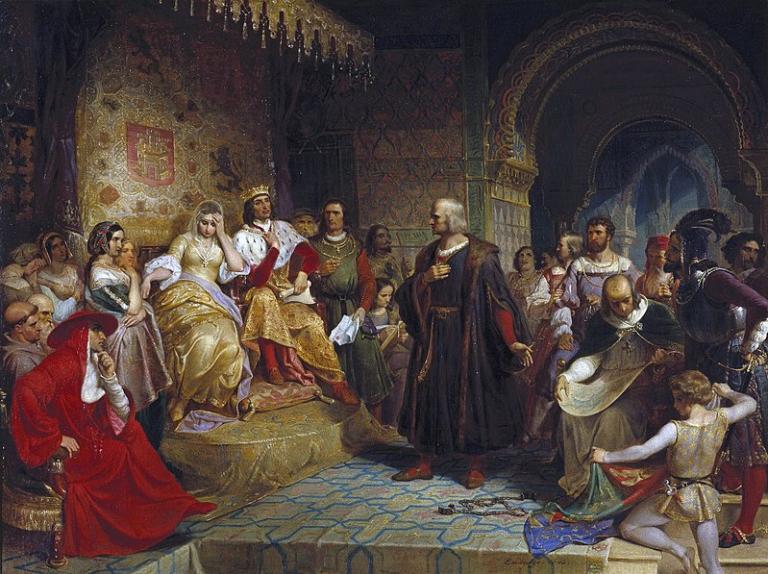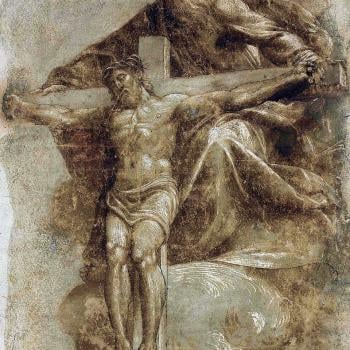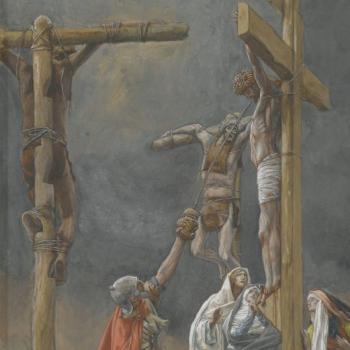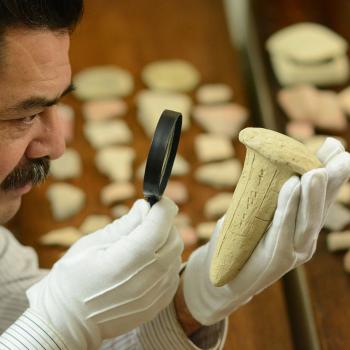
Many people look back at Christopher Columbus as a self-made man who discovered a new world. How often do we think that Columbus himself might actually be our own creation: we made him into the man of our imaginations.
For example, I grew up learning in school that Columbus discovered America. Did he? No. Actually the First Nations people were here first. They discovered it long before him. Columbus did not discover them. They knew they themselves existed long before he landed. As the following New York Times account attests,
“We were here first,” Ray Geer, a Paucatuck Eastern Pequot and president of the Connecticut River Powwow Society, said to The Times in 1991. “We find the notion that Columbus discovered us extremely distasteful.”
In spite of such distastefulness in the mouths of many indigenous people across the land, such historical precedence does not play well or keep in step with the spirit of the white American pioneer’s fan base.
It is sometimes particular Western groups that find Columbus appealing and use him to their liking, as the case with many Italian Americans during and after World War II. Not only did they wish to celebrate Italian achievements throughout the centuries, but also they wanted to support Italian nationalism.
Columbus is in the eye of the beholder. It is not simply the American explorer or the Italian nationalist who make Columbus into their own image. The critic of medieval Christianity also remakes Columbus into their likeness so as to denounce Christianity. Some argue that Columbus’ opponents held to the “flat earth” thesis, whereas in fact they held that the world was an exceedingly large globe. The reason why many opposed Columbus’s expedition was not because he denounced a flat earth view, but that they believed his calculations were off and that he would not make it to India, dying on the way (Columbus had no idea the Americas existed; he thought he would reach India directly; on the subject of Columbus and the Flat Earth thesis, refer here, here, and here). As the historian of science Jeffery Burton Russell puts it:
Fallacies or ‘myths’ of this nature take on a life of their own, creating a dialectic with each other and eventually making a ‘cycle of myths’ reinforcing one another. For example, it has been shown the ‘The Inquisition’ never existed, but that fallacy, like the flat earth fallacy, is part of the ‘cycle’ that includes The Dark Ages, the Black Legend [of the Inquisition trials], the opposition of Christianity to science, and so on. The cycle becomes so embedded in our thought that it helps to form our worldview in ways that make it impervious to evidence. We are so convinced that medieval people must have been ignorant enough to think the world flat that when the evidence is thrown in front of us we avoid it, as we might, when driving, swerve around an obstacle in the road. Thus our worldview is based more upon what we think happened than what really happened. A shared body of myth can overwhelm all evidence …[1]
The point of this post is not to try and deny people the opportunity to learn something from Columbus. Rather, the point is to consider the history of reception and its cultural backdrop so that we are more discerning about the heroes we admire and the myths that inspire us. I look forward to opportunities to honor those who have come before us and who have led the way in affirming indigenous cultures. We don’t need to flatten out our history books and make them serve this or that agenda. Rather, we need to fill out our history books with greater complexity, showing how diverse, flawed and multi-faceted people, including heroes and eras were. Otherwise, we will only repeat history. Rather than making America great again, such oversimplification will only make us worse.
_________________
[1] Jeffery Burton Russell, Inventing the Flat Earth: Columbus and Modern Historians (Connecticut: Prager Publishers, 1997),76.












